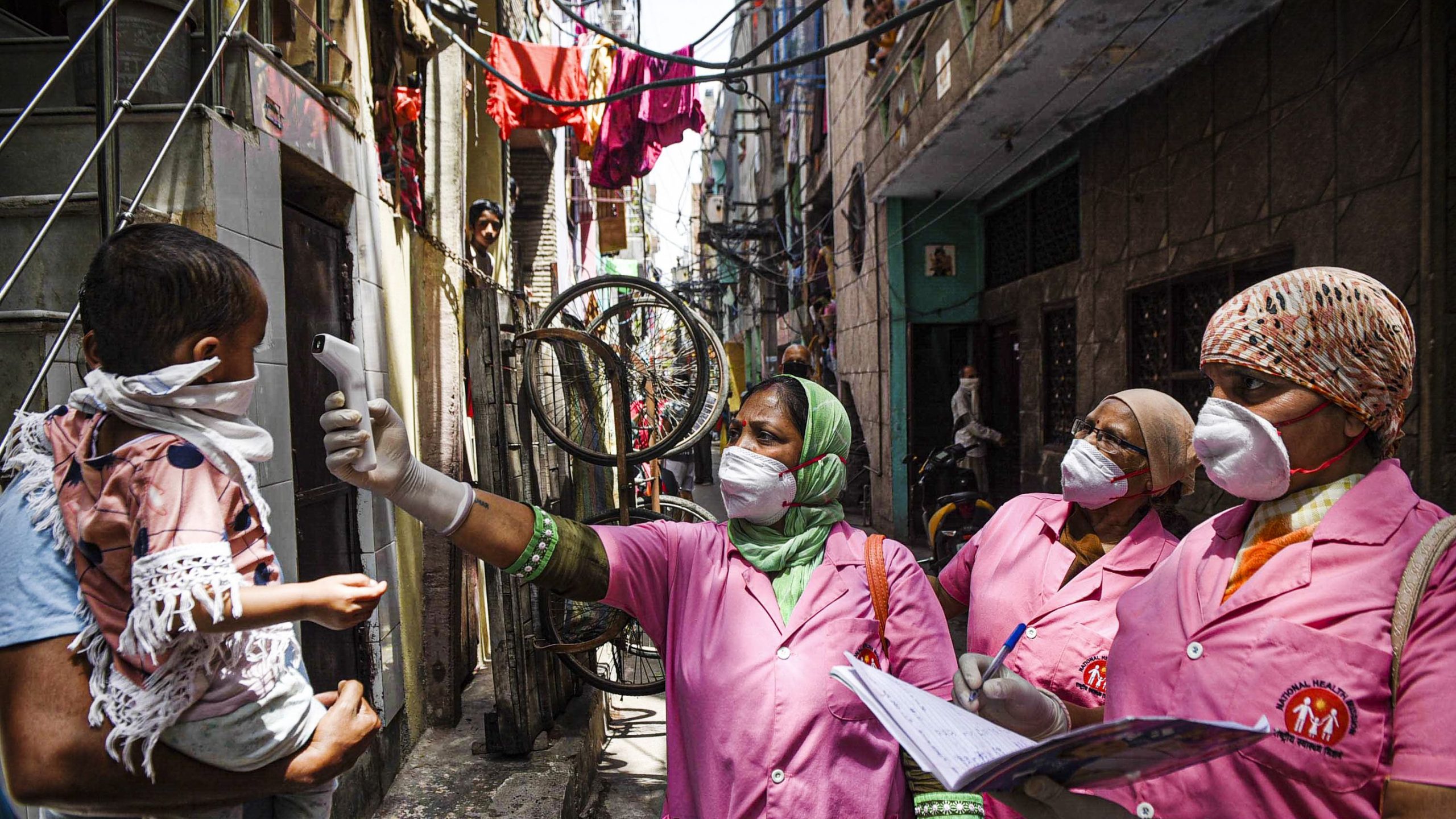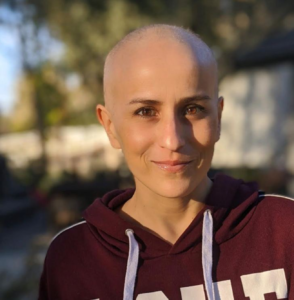A one-size-fits-all approach to fighting the virus could lead to even more suffering in the developing world.
The coronavirus pandemic that’s shattered lives throughout high-income countries is hitting the developing world as well. But while many of the world’s poor countries affected by the virus have imposed the same social distancing measures as rich ones, the results have not been the same — and the unintended consequences are proving to be deadly.
In most high-income countries, stay-at-home orders have been a cornerstone of the coronavirus response. But we’re learning quickly that taking a one-size-fits-all approach doesn’t necessarily fit very well with the needs of the developing world.
The litany of unrest and suffering is growing by the day. In Kenya, police beat people for defying a stay-at-home order and shot to death a 13-year-old boy who was standing on his balcony. Human rights activists in Nigeria say that at least 18 people have been killed by security forces enforcing the lockdown. In India, news of an impending national lockdown sent millions of laborers fleeing for the rural areas where they hoped they could find food during the shutdown. They likely carried the coronavirus with them.
“My request to all my countrymen is that coronavirus will not be allowed to spread across new areas at any cost,” Indian Prime Minister Narendra Modi said in a speech extending the country’s lockdown by three weeks. “I understand the great difficulties you are facing regarding food, the lack of movement. Some had to stay away from their families. You are fulfilling duties as disciplined soldiers for the sake of the nation.”
:no_upscale()/cdn.vox-cdn.com/uploads/chorus_asset/file/19908788/GettyImages_1209563788.jpg)
“It seems like there’s a bit of global mimicry,” Lee Crawfurd of the Center for Global Development, a London-based think tank that studies policy in the developing world, told me. “Countries are just doing what seem like the official things,” even though the same approach causes different problems.
How can lockdowns cause more harm in poor countries than rich ones? When almost everyone works in an informal economy and needs to work every day to put food on the table — the situation in some of the poorest countries — calling a halt to economic activity can getrapidly disastrous. When states have limited budgets and capacity to support their locked-down population, lockdowns can result in widespread starvation and rampant disobedience and unrest.
How the US stacks up to other countries in confirmed coronavirus cases
And in dense urban settings where there’s limited sanitation, staying home doesn’t even prevent the virus from spreading.
Unless they chart a new course, many countries in the developing world are at risk of getting the worst of both worlds — mass poverty from shutdowns and mass illness and deaths from the continued spread of the virus.
In rich countries, lockdowns are rough. In poor ones, they haven’t stopped the virus — and can lead to greater suffering.
Within the rich world, the advice from epidemiologists has been fairly consistent: People must employ social distancing, even at substantial economic costs, to prevent the virus from sweeping through the communities and overloading the hospitals. When the virus has gotten out of hand, nearly every rich country has enforced a shutdown to reduce the growth of cases.
This has largely worked, though at a terrible price. From China to Italy, countries that have implemented aggressive orders to stay home have seen their case numbers start to fall (it is unclear whether U.S. case numbers are on the same trajectory).
RELATED
New unemployment filings are so high only the Great Depression compares
Many poor countries have emulated these steps. El Salvador announced a 30-day national quarantine on March 21, when it had no known cases. On March 24, India shut down the whole country of more than 1 billion people. Kenya and Rwanda have also locked down, as have parts of Nigeria. More than half of the world’s population is now under some kind of movement restriction.
But while these policies are well-intentioned, they’re not working. In fact, they may be causing even more suffering. In El Salvador, crowds of people swarmed the capital begging for aid more than a week after the lockdown was announced. Researchers in India report that they’ve already documented hundreds of deaths caused by the lockdown, including people who died of starvation and migrants fleeing the cities for rural areas who collapsed of exhaustion or were run over on the roads.
Even worse, the lockdowns, in addition to causing all sorts of misery, are not even stopping the spread of the virus. Poor countries now represent all of the countries where Covid-19 cases are growing most rapidly. That’s because states don’t have the capacity to enforce lockdowns, and citizens don’t have the luxury of obeying them, pushing them to disobey government orders out of desperation.
:no_upscale()/cdn.vox-cdn.com/uploads/chorus_asset/file/19908805/GettyImages_1210094508.jpg)
One factor abetting all this is that many cities in the developing world are so dense that the virus’s spread will be rampant even if everyone stays home. “There are 1.2 billion people globally living in informal slums, which by definition are crowded and lack sufficient access to water and sanitation facilities meaning any force of isolation or quarantine is impossible. In some slums the density is as high as 800,000 people per square mile — for comparison, New York City’s is 27,000,” Asif Saleh and Richard A. Cash at the Center for Global Development point out. How do you socially distance amid that kind of density?
Making matters worse, poor states lack administrative capacity to communicate their rules, enforce them, and problem-solve in individual situations.
“Imposing social distancing and enforcing the policy is very difficult when institutional capacity is limited around the country,” Yale development economist Ahmed Mushfiq Mobarak has argued. “Something that China can impose is not possible for us to impose on a large scale in Bangladesh.”
Donating and volunteering to help during Covid-19, explained
Lockdowns have also prompted people to leave dense cities, where they had gone to find work, for their homes in rural areas. In India, after the lockdown was issued, the streets were filled with migrant workers fleeing the cities. Economist Martin Ravallion argues that such migration threatens “to spread the virus even faster, and especially into poor and vulnerable rural populations. We are likely to see outbreaks throughout the rural areas of countries that have imposed strict lockdowns.”
Stay in lockdown and starve — or break quarantine to feed your family?
Most people in developing countries are part of an informal economy, and so they’re hard to target with financial aid — and that’s if a country can afford to offer it. They often also have no savings and need the money they earn each day or each week to feed their family. That makes it impossible for them to comply with social distancing rules.
“If you’re a day-wage laborer in a rural area of a developing country, and you don’t have much of a buffer of savings, you may be reliant on your wage earnings in a given day or a given week in order to feed your family,” Mobarak argues. “If their family is going hungry that week, they’re not going to follow all of your guidelines.”
:no_upscale()/cdn.vox-cdn.com/uploads/chorus_asset/file/19908815/GettyImages_1210210821.jpg)
“The choice before you is often to stay home and fail to provide the evening meal for your family, or to brave it out into the city and try and fend for your family,” Zimbabwe human rights lawyer Karsten Noko wrote for Al Jazeera.
And indeed, developing countries that have imposed lockdowns have seen widespread defiance of those lockdowns. Governments have frequently responded with escalating police violence to try to make people stay home. But if people expect to starve at home, they’ll be willing to risk the consequences of breaking quarantine if it means getting work and feeding their family.
The lack of medical capacity is also a problem
Even rich countries have struggled — as they’ve locked down — with the question of what to do next. Is the plan just to drag out the epidemic to keep case numbers below hospital capacity? To stay shut down until we have a vaccine? (No country in the world can afford such a shutdown.)
Those questions are even more urgent for developing countries.
Much of the focus of suppressing the virus in rich countries has been building hospital capacity so that people are not turned away from needed medical care. In much of the world, though, that’s not achievable.
When the outbreak in the US began, the country scrambled to make sure it had enough ventilators for the hundreds of thousands of people who were expected to need them if the outbreak spread uncontrolled. Nigeria, with 200 million people, has around 500 ventilators. The Central African Republic (population: 5 million people) has three. Liberia is believed to have none.
:no_upscale()/cdn.vox-cdn.com/uploads/chorus_asset/file/19908827/GettyImages_1209438002.jpg)
Sending more ventilators won’t help, either: They require specialized medical knowledge to use, which is rarer in developing countries. Poor nations also tend to have very few doctors per capita and little personal protective equipment (PPE).
“Most African nations, if not all, do not have what they need to combat this pandemic,” Dr. Jerry Brown, who led Liberia’s Ebola response and is preparing their coronavirus response, said.
Simply put, trying to solve Covid-19 with an increase in hospital capacity is not realistic in the world’s poorest countries. Unless a cheap, straightforward treatment regime is developed, the only way to protect people in those countries from the virus is to prevent them from catching it — which leads back to the dilemma of lockdowns that might cause greater harm.
“If there’s zero health care capacity, flattening the curve doesn’t help very much,” Crawfurd told me.
The best hope might be that developing countries slow down their outbreaks until richer countries have learned more about the best treatments, and those treatments start to be mass-produced. “Buying time,” Crawfurd said, might make a significant difference — not because it increases medical capacity but because more will be known about the virus and how to fight it.
The rich world can’t afford to ignore everyone else
But if lockdowns in the developing world are having such bad impacts, why have they happened at all? Some observers have argued that, as panic mounts, public health authorities are imitating the advice from the rich world — with no regard for whether it fits the situation in front of them.
“WHO guidelines on pandemics tend to internationalise interventions that ignore the variable experiences of a large part of the world,” the University of Central Lancashire’s George Ogola, who studies international media, writes. “Governments across the continent have instituted the WHO guidelines and followed in the footsteps of Europe, China and the US,” he adds.
The problem, of course, is that those countries have more state capacity, more resources, far more hospitals, and the ability to support their locked-down populations with an expanded welfare state. Trying to apply one-size-fits-all solutions in poorer countries could produce famine on top of a health crisis.
The gathering tragedy in the developing world needs our attention. Suffering in distant parts of the world is often ignored by people in rich countries even in the best of times. It’s even easier to ignore right now. The pandemic is global, but it has in many ways drawn people’s attention closer to home.
:no_upscale()/cdn.vox-cdn.com/uploads/chorus_asset/file/19908840/GettyImages_1209293323.jpg)
We know some of what needs to be done to help the developing world — lots of monetary aid and fast, shipments of medical supplies so doctors can keep seeing patients. But there’s little will to do it, as o states fight among themselves for desperately needed equipment.
There have been a few steps taken to protect the developing world. The G20 just agreed to a 12-month “debt standstill,” meaning the world’s poorest countries can stop making payments on their debt to rich countries for the next year. That should free up significant money for coronavirus response.
But it falls far short of what developing-world experts have been calling for. The emerging consensus is that what’s needed is a comprehensive aid package from rich countries that enables achievable policies like scaling up PPE purchases, universal aid to help avert mass starvation, quarantines for the sick, and access to treatments and vaccines once we know what the best options are.
And here’s the thing: Paying for virus relief in poor countries is actually much cheaper than paying for it at home, because average income is so much lower. The US has spent $2 trillionat home on mitigating the effects of lockdowns. We could mitigate their effects in developing countries for a fraction of that. “Surely we could just pay for everyone in low-income countries to stay home,” Crawfurd told me.
Realistically, though, there are no prospects of that larger-scale aid package right now.
And that’s a moral failure by rich countries. It’s also a strategic failure that could have devastating consequences. Some experts think the virus is likely to become endemic due to countries that fail to suppress it — meaning it will keep circulating the world regularly and making the regular flu season much much deadlier. The pandemic should be a reminder that nowhere in the world is safe while many parts of it lack the needed health infrastructure to protect their populations.
But it looks like it’ll be a long time before we take that lesson to heart — and in the meantime, little help will be forthcoming.
Correction, April 20: An earlier version of this story misstated Modi’s titled. He is the prime minister of India.




